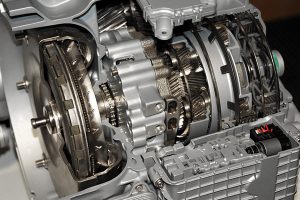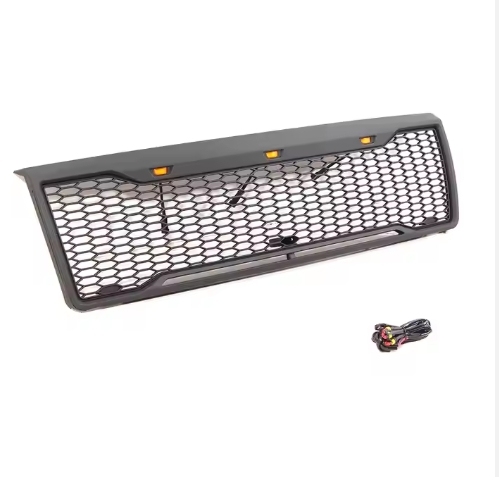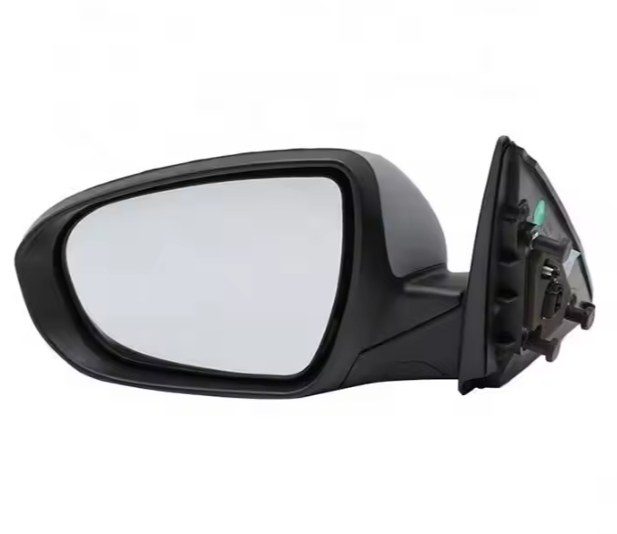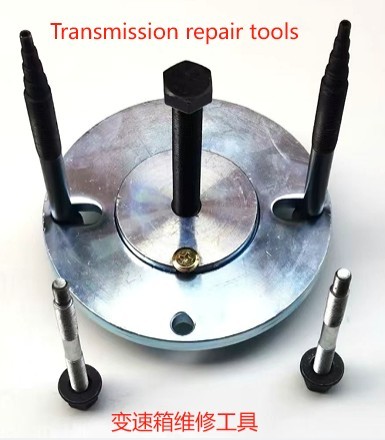Transmission, also known as gearbox, is a mechanism used to change the speed and torque from the engine. It can fix or change the transmission ratio of the output shaft and input shaft in fixed or stepped gears. The transmission consists of a speed change transmission mechanism and a control mechanism. Some cars also have a power output mechanism. Most of the transmission mechanisms use ordinary gear transmission, and some use planetary gear transmission. Ordinary gear transmission transmission mechanisms generally use slip gears and synchronizers.

Classification #
1. Stepped transmission
Stepped transmissions are the most widely used. It adopts gear transmission and has several fixed transmission ratios. Depending on the type of gear train used, there are two types of axis-fixed transmissions (ordinary transmissions) and axis-rotating transmissions (planetary gear transmissions). The transmission ratio of transmissions for cars and light and medium trucks usually has 3-5 forward gears and one reverse gear. In combined transmissions for heavy trucks, there are more gears. The so-called transmission gear number refers to the number of forward gears.
2.Continuously variable transmission
Continuously variable transmission refers to a transmission system that can continuously obtain any transmission ratio within the transmission range. Continuously variable transmission can achieve the best match between the drive train and engine operating conditions. Common continuously variable transmissions include hydromechanical continuously variable transmissions and metal belt continuously variable transmissions (VDT-CVT).
3. Integrated transmission
Integrated transmission refers to a hydromechanical transmission composed of a hydraulic torque converter and a gear-type stepped transmission. Its transmission ratio can be continuously changed within several discontinuous ranges between the maximum value and the minimum value. Currently, There are many applications.
Function #
1.Change the transmission ratio
Meet the traction requirements of different driving conditions, make the engine work under favorable working conditions as much as possible, and meet possible driving speed requirements. Change the speed of the car and the torque on the driving wheels of the car within a wide range. Due to different driving conditions of the car, the driving speed and driving torque of the car are required to change within a wide range.
For example, the vehicle speed on the highway should be able to reach 100km/h, while in urban areas, the vehicle speed is often around 50km/h. When an empty vehicle is driving on a straight road, the driving resistance is very small, but when it is fully loaded and going uphill, the driving resistance is very large. The characteristic of automobile engines is that the speed change range is small, and the torque change range cannot meet the needs of actual road conditions.
2. Realize reverse driving
Used to meet the needs of the car driving in reverse. To achieve reverse driving of a car, the engine crankshaft generally can only rotate in one direction, and the car sometimes needs to be able to drive backwards. Therefore, the reverse gear set in the gearbox is often used to realize the reverse driving of the car.
3. Interrupt power transmission
When the engine starts, idles, shifts gears, or needs to be stopped for power output, the power transmission to the drive wheels is interrupted.
4. Achieve gaps
When the clutch is engaged, the transmission may not output power. For example, it can be ensured that the driver releases the clutch pedal and leaves the driver’s seat without stalling the engine.
Constitute #
The gearbox consists of two parts: a speed change transmission mechanism and a speed change control mechanism. The main function of the speed change transmission mechanism is to change the value and direction of torque and rotational speed; the main function of the control mechanism is to control the transmission mechanism to realize the transformation of the transmission ratio, that is, to achieve gear shifting, in order to achieve variable speed and torque.
Structure #
The simple transmission has the advantages of high efficiency, simple structure and easy use, but it has few gears and a small i change range (small traction and speed range), so it should only be used by some lathes with a small number of gears. If the range of i is increased, the size of the transmission will be increased and the shaft span will be increased. In order to increase the number of gears without making the shaft span too large, a component transmission can be used. The so-called component transmission is usually composed of two simple transmissions. The one with more gears is called the main transmission, and the one with fewer gears is called the auxiliary transmission.
Principle #
The mechanical gearbox mainly applies the speed reduction principle of gear transmission. Simply put, there are multiple sets of gear pairs with different transmission ratios in the gearbox, and the gear shifting behavior when the car is driving is to make different gear pairs in the gearbox work through the operating mechanism. For example, at low speed, let the gear pair with a large transmission ratio work, and at high speed, let the gear pair with a small transmission ratio work.

 April 1, 2024
April 1, 2024 










